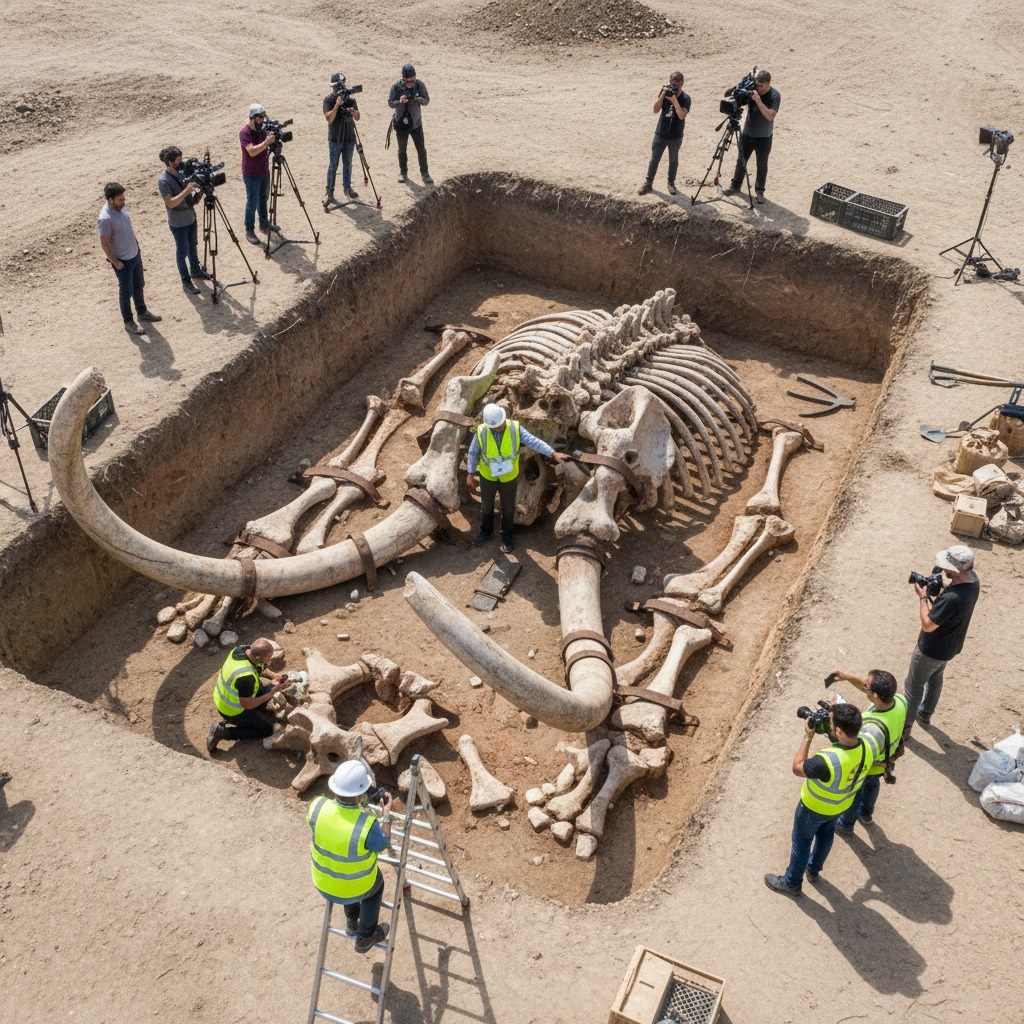Mammoth Discovery Unearthed in Siberia: Ancient Remains Captivate Archaeologists and Media

The biting wind, a perennial companion in the vast, unforgiving expanses of the Verkhoyansk Range in Siberia, offered little comfort to Dr. Artyom Volkov. For years, his team had been meticulously surveying the permafrost-laced riverbanks of the Aldan, a tributary known more for its gold rush history than its paleontological treasures. But today, the wind carried a different kind of shiver – one of profound discovery.
It began subtly in the early spring of 2023, as the permafrost began its annual, grudging retreat. A local hunter, tracking reindeer, stumbled upon an anomaly: a colossal, curved tusk, partially exposed from a newly eroded river bluff. The photos he sent to Yakutsk were grainy, but to Artyom, they screamed “mammoth.”
Within weeks, a small, dedicated team, battling mosquitoes and unpredictable weather, had established a preliminary excavation. What they found wasn’t just a tusk. It was an entire, largely articulated skeleton of a woolly mammoth, a magnificent bull estimated to be over 50,000 years old, resting as if laid to sleep by ancient hands.
Word travels fast in the tight-knit world of archaeology, and faster still in the age of instant media. By mid-summer, the remote Aldan site, once known only to a handful of geologists and indigenous communities, was abuzz. The drone footage, initially for mapping, now streamed globally, showing the massive, beige bones emerging from the rich, dark earth.
“It’s exceptional,” Dr. Elena Petrova, a renowned Quaternary paleontologist from Moscow, explained to a dozen camera crews, her voice barely audible above the whirring of equipment. She gestured towards the skull, almost perfectly preserved, its empty eye sockets seeming to stare into the aeons. “The level of preservation, the context… it suggests a rapid burial, perhaps caught in a flash flood or a catastrophic sinkhole. We’re not just finding bones; we’re reading a chapter of the Pleistocene.”
The archaeologists, distinguishable in their bright yellow safety vests, moved with a delicate urgency, each brushstroke and trowel scoop a testament to their painstaking craft. They uncovered not just the skeletal remains, but fragments of ancient plants trapped with the bones, clues to the mammoth’s last meal, and even subtle tool marks on some rib bones, hinting at early human interaction. This last detail sent a ripple of excitement through the anthropological community.
Local media, then national, then international, descended upon the site. Satellite dishes sprung up amidst the tundra grasses, turning the desolate landscape into a temporary hub of global attention. News anchors reported live from the muddy edges of the pit, narrating the story of a lost world resurrected by science. The “Aldan Mammoth,” as it was quickly christened, became a symbol of Siberia’s hidden natural history, a silent giant speaking volumes about climate change, ancient ecosystems, and the deep past of both animal and human life.
Artyom, often seen wiping sweat or fine dust from his brow, found himself giving interviews between carefully supervising the lifting of a massive femur. He spoke not just of bones, but of the animal’s life – its wanderings across frozen plains, its challenges, its eventual demise. He envisioned a future where this discovery would not only rewrite textbooks but also inspire a new generation to look beneath their feet, to understand the incredible stories buried just beneath the surface of our ever-changing world. The Aldan Mammoth was more than a relic; it was a profound connection to a planet’s distant memory, now vividly brought back to life.
